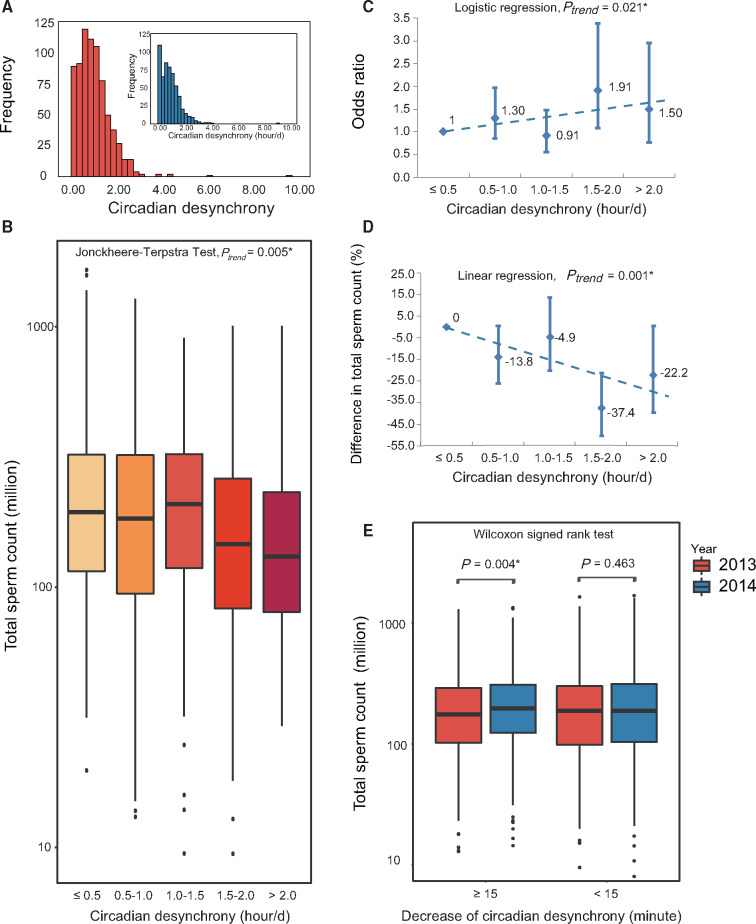Figure 3.
Association between non-work-related circadian desynchrony and total sperm count in Chinese undergraduates. Data were taken from a cohort of Chinese undergraduates interviewed in two consecutive years (Yang et al., 2015). The analyses are shown for Chinese undergraduates differing in circadian desynchrony between school days and days off. (A) Circadian desynchrony at baseline (blue bars; median, 0.9 h) and 1-year follow-up (red bars; median, 0.8 h). (B) The comparison of total sperm count. (C) The risk of low sperm count in relation to circadian desynchrony at baseline, with adjustment for potential confounders. The regression result is shown as a dotted line. (D) The association of the decrease in total sperm count with circadian desynchrony at follow-up, with adjustment for sleep quality in addition to the confounders included at baseline. (E) The total sperm count at the end of 2013 and 2014 split according to the decrease in circadian desynchrony during the same period. *P < 0.05.

